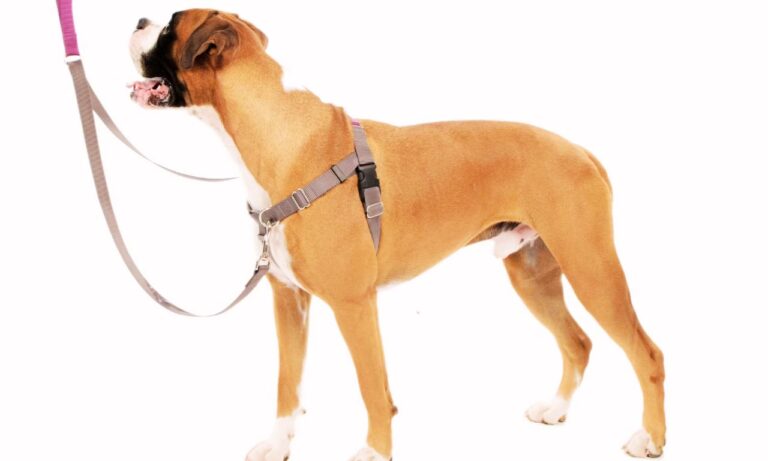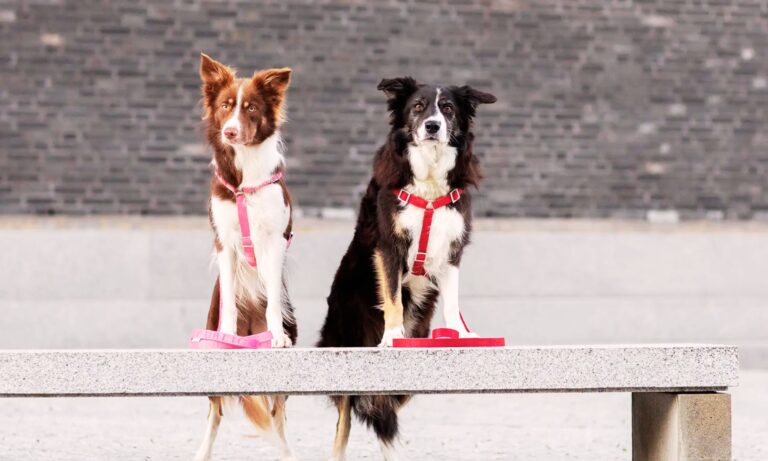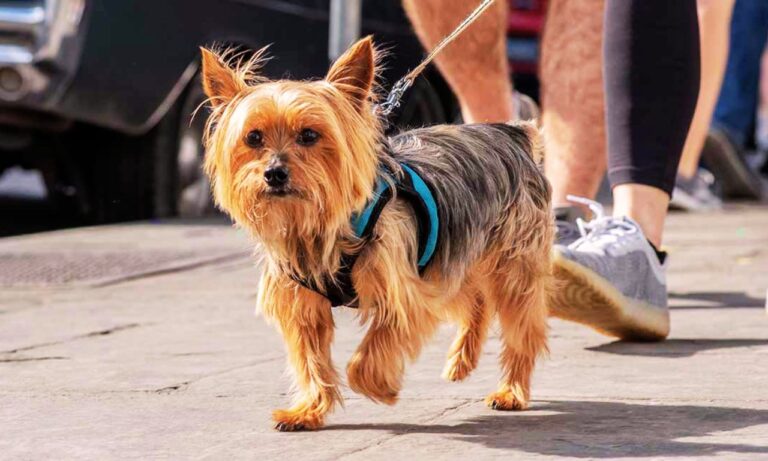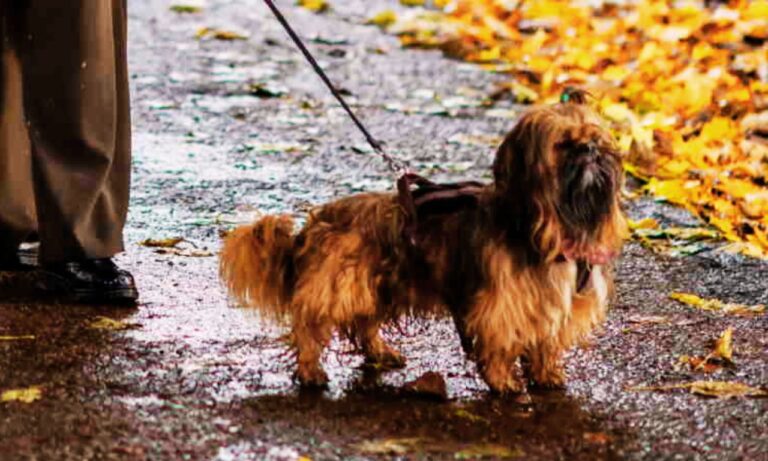The Samoyed vs Alaskan Malamute both hail from the Arctic, built for sub-zero temperatures and endurance work. With thick double coats, plumed tails, and a dignified presence, they seem similar at first glance. But when you dig into their physical structure, behavioral traits, and lifestyle needs, you find two very different companions.
The Samoyed, with its iconic smile and gleaming white fur, was bred by the Samoyede people for herding, pulling, and warmth-sharing. The Alaskan Malamute, on the other hand, is the freight-hauler of the Arctic — a tank compared to the Samoyed’s trotting versatility.
This complete breed comparison breaks down the numbers, growth patterns, temperament, strength, and real-life suitability of these two majestic working dogs. To find the perfect fit, learn more about what size collar for a Bichon, ensuring your dog’s comfort and safety.
Blog Highlights
ToggleSize & Growth: Compact Muscle vs Fluffy Elegance
Breed Growth Chart: Male Averages
| Age | Samoyed (Weight) | Alaskan Malamute (Weight) | Samoyed (Height) | Alaskan Malamute (Height) |
| 2 Months | 8–12 lbs | 15–20 lbs | 9–11 in | 11–13 in |
| 4 Months | 18–25 lbs | 35–45 lbs | 12–14 in | 16–18 in |
| 6 Months | 30–40 lbs | 50–60 lbs | 16–18 in | 20–23 in |
| 9 Months | 40–45 lbs | 65–75 lbs | 18–20 in | 22–25 in |
| 1 Year | 45–55 lbs | 75–85 lbs | 20–22 in | 23–25 in |
| Full Grown | 50–65 lbs | 85–100 lbs | 21–23.5 in | 23–25 in |
Female dogs of both breeds are typically 10–15% lighter and 1–2 inches shorter.
Samoyed: The Smiling Nomad Herding Companion
Size Overview
- Male Weight: 50–65 lbs
- Male Height: 21–23.5 in
- Female Weight: 35–50 lbs
- Female Height: 19–21 in
Build and Coat
Samoyeds are medium-sized but deceptively muscular under their fluffy white coats. Their powerful haunches, arching necks, and snowshoe paws were engineered to herd reindeer, pull sleds, and keep humans warm at night — literally sleeping beside them for body heat.

Their coat has two layers: a dense, wool-like undercoat and a long outer coat that repels snow and dirt. The hallmark “Sammy smile” prevents icicles from forming at the corners of their mouth.
Discover the ideal option by exploring what is the best collar material for a Bichon Frise to ensure your pet’s comfort and durability.
Alaskan Malamute: Arctic Strength in Massive Frame
Size Overview
- Male Weight: 85–100 lbs
- Male Height: 23–25 in
- Female Weight: 75–85 lbs
- Female Height: 22–24 in
Build and Coat
Alaskan Malamutes are true giants in the working dog category. Their heavy-boned structure, deep chest, and bear-like face scream power. Built by the native Mahlemut people, they weren’t meant for speed — they were freight haulers designed to move hundreds of pounds of supplies.

Malamutes sport a thick, oily double coat. It’s far denser than the Samoyed’s and more coarse to touch. Their tails plume in a curl over the back, offering warmth and protection from snow when sleeping.
Structure Comparison: Frame, Gait & Functional Design
| Trait | Samoyed | Alaskan Malamute |
| Frame Type | Medium, agile, compact | Heavy-boned, broad-chested |
| Gait | Light-footed, springy | Slow, deliberate, powerful |
| Chest | Moderate width, deep | Broad, barrel-shaped |
| Legs | Muscular, straight | Thick, powerful, weight-bearing |
| Tail | Plumed, carried over back | Heavily plumed, curled |
| Head Shape | Wedge-shaped, refined | Broad, strong, bear-like |
| Ears | Small, upright, triangular | Small, thick, erect |
Conclusion:
Samoyeds are built for versatile work and moderate pulling. Malamutes, on the other hand, have a freight-train body built strictly for hauling and resistance work.
Temperament & Trainability: Friendly Smile vs Stoic Loyalty
Samoyed
- Energy Level: High
- Temperament: Friendly, expressive, social
- Trainability: Moderate (stubborn streaks)
- Best For: Families, outdoor lovers, colder regions
Samoyeds love people — deeply. They’re extremely expressive and vocal, often using “talking” rather than barking. While affectionate and eager to please, their intelligence makes them stubborn if not engaged. They thrive in social households with activity and attention.
Alaskan Malamute
- Energy Level: Moderate
- Temperament: Dignified, independent, loyal
- Trainability: Low to moderate (dominant nature)
- Best For: Experienced handlers, large homes, cold weather
Malamutes are loyal to their people but aren’t outwardly affectionate like the Samoyed. They’re confident, sometimes aloof, and prone to being dominant. They aren’t barkers but may howl or “talk” occasionally. Strong leadership is essential for this breed.
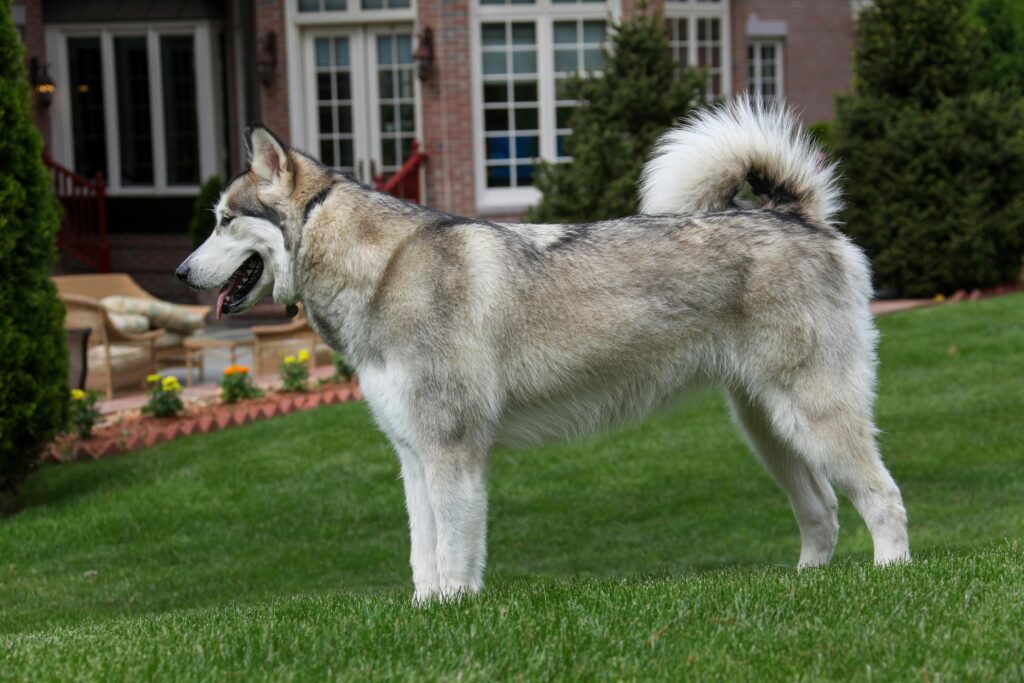
The American Staffordshire Terrier’s coat type is short, sleek, and easy to maintain with regular brushing.
Grooming, Shedding & Coat Maintenance
| Feature | Samoyed | Alaskan Malamute |
| Shedding | Very High (year-round + blowouts) | Very High |
| Coat Length | Medium–long | Medium |
| Grooming Need | Daily brushing in seasons | Weekly brushing, daily during shedding |
| Coat Type | Soft undercoat + long, dry outer | Oily, coarse outer + woolly undercoat |
Both breeds shed heavily, especially in spring and fall. Samoyeds require more frequent grooming to maintain their white coat, while Malamutes’ coats are lower maintenance but denser.
Strength & Work Ethic
Samoyed Strength Profile
- Pull Weight: ~2–3 times body weight (100–150 lbs)
- Speed: Moderate, built for distance
- Endurance: High
- Work Origin: Herding, pulling light sleds, warmth-sharing
Samoyeds were not bred for freight — they were multi-purpose dogs who lived with nomadic tribes. Their strength lies in their stamina and ability to adapt to both labor and human companionship.

Alaskan Malamute Strength Profile
- Pull Weight: Up to 1,000+ lbs in weight-pulling competitions
- Speed: Slow
- Endurance: High
- Work Origin: Pulling freight and heavy loads
Malamutes are arguably the strongest sled dogs in the world. They’re slower than Huskies or Samoyeds but capable of dragging tremendous loads over ice.
Health & Longevity
Samoyed Health Stats
- Lifespan: 12–14 years
- Common Issues: Hip dysplasia, progressive retinal atrophy (PRA), hypothyroidism, diabetes
- Other Risks: Samoyed hereditary glomerulopathy (kidney disease)
Alaskan Malamute Health Stats
- Lifespan: 10–12 years
- Common Issues: Hip dysplasia, cataracts, chondrodysplasia (dwarfism), hypothyroidism
- Other Risks: Polyneuropathy (nerve issues), zinc deficiency
Samoyeds tend to live longer than Malamutes and are generally more robust in terms of joint health due to their lighter frame. However, they carry some rare hereditary diseases unique to the breed.

The best collar size for an American Staffordshire Terrier ensures a comfortable and secure fit for your dog during walks and training.
Lifestyle Suitability: Which Breed Fits You?
Apartment Living?
- Samoyed: Possible with 2+ hrs exercise daily and a vacuum.
- Alaskan Malamute: Not recommended — too large, too strong, too vocal.
Hot Climates?
- Samoyed: Not ideal — prone to overheating in warm, humid climates.
- Alaskan Malamute: No — thick coat makes heat dangerous.
Family-Friendly?
- Samoyed: Excellent — loves children, very affectionate.
- Alaskan Malamute: Good — loyal, protective, but requires supervision with small kids.
First-Time Owners?
- Samoyed: Maybe — with dedication to grooming and training.
- Alaskan Malamute: No — requires experienced handler due to strength and independence.
For a step-by-step guide on how to wear collar to an Affenpinscher, check out this detailed article to ensure a comfortable and secure fit for your dog.
Summary Table: Samoyed vs Alaskan Malamute
| Trait | Samoyed | Alaskan Malamute |
| Weight (M) | 50–65 lbs | 85–100 lbs |
| Height (M) | 21–23.5 in | 23–25 in |
| Lifespan | 12–14 yrs | 10–12 yrs |
| Energy Level | High | Moderate |
| Grooming Need | Very High | High |
| Strength | Moderate | Extreme |
| Trainability | Moderate | Low–Moderate |
| Friendliness | Very High | Moderate–High |
| Vocalization | High (barks/talks) | Medium (howls) |
| Good for Families | Yes | Yes (with guidance) |
| Apartment OK | Sometimes | Rarely |
| Heat Tolerance | Low | Very Low |
Final Verdict: Samoyed vs Alaskan Malamute — Who’s Better?
Samoyed vs Alaskan Malamute: Choose the Samoyed if you want a fluffy, social, high-energy companion who loves people, needs daily activity, and is fine living indoors — provided you handle the grooming. They’re the smiling face of Arctic dogdom, and one of the most affectionate northern breeds.
Pick the Alaskan Malamute if you’re seeking raw strength, independence, and a protective dog that thrives outdoors in cold climates. Malamutes demand respect and structure — but give back loyalty and power in spades.
Both are stunning, ancient, working dogs — but they fit very different lifestyles. Choose wisely based on your home, experience, and energy level. Check out the best dog collars for Border Collie to find durable, stylish, and comfortable options for your active dog.


